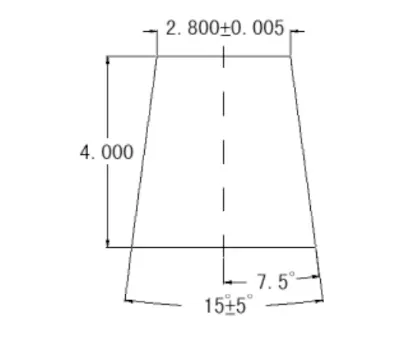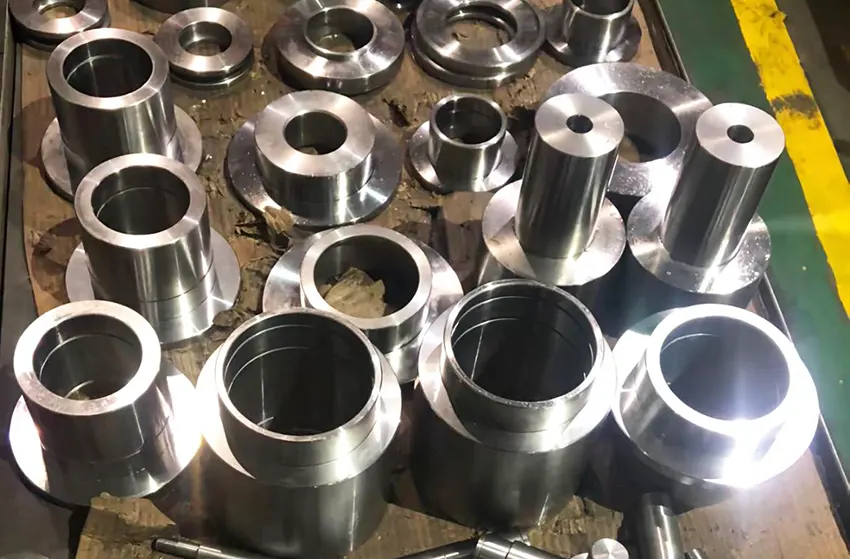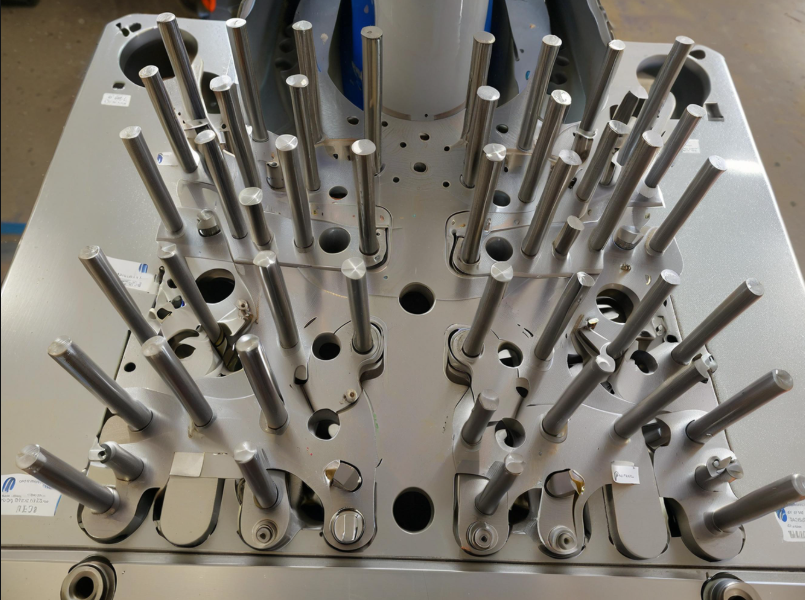In production, manufacturers usually classify irregularly shaped parts as shaped parts. These parts have unique structural features based on their specific uses.
Their technical requirements vary depending on their functions and the environments in which they are applied. As a result, no fixed rule applies to all shaped parts.
Shaped parts have no regular shape. They are used mainly in production to solve the problem of positioning and clamping the workpiece.
Batch production of parts ensures the accuracy of parts processing, meets the needs of the clamping premise, shortens the processing time, and improves production efficiency.
As shown in Figure 1, the parts have complex shapes and structures. They require multi-surface machining and high machining accuracy.

In such cases, using a vise directly on a three-axis machining center cannot complete the processing.
To address this, engineers designed a series of fixtures to support the machining process.
These fixtures allow for quick and easy clamping, ensure machining accuracy, and improve production efficiency.
Parts characteristics and technical requirements
Part characteristics.
The maximum profile size 3. 9311 (in) × 3. 3711 (in) × 1. 445 (in) is a tapered part consisting of two precision holes ø 0. 5910 (+ 0 / – 0.0005) and ø 0. 9450 (+ 0 / – 0.0005) with their axes intersecting at 6.0000 (+ 0.005 / – 0).
There are grooves in the middle of both sides of the part, and one end of the ø0.9450 has a clamping slot to limit the position. The other end has threads and curved surfaces.
This part has a complex shape and structure. It requires high machining accuracy, especially at the intersection of the axes of the two precision holes.
This intersection size is a critical functional dimension and challenging to control.
Technological analysis
The external dimensions of the parts and surface roughness requirements are not less than Ra63. The overall idea is processed as follows: rough milling blank -> milling -> end shape -> finishing two precision holes -> milling the middle slot.
Rough milling blank (process number: OP10)
Saw the workpiece to dimensions of 4.0 in × 4.0 in × 1.575 in. Clap the blank in the thickness direction. Use a ø60 mm face milling cutter to mill one side at a 7.5° angle from the centerline of the workpiece. Ensure that the small end size is not less than 2.810 in.
Then, rotate the workpiece and clamp it again by its thickness, with the previously machined surface facing downward. Level the bottom of the workpiece using a 7.5° slanting block.
Next, use a ø60 mm disc cutter to mill the opposite side at a 15° taper angle relative to the upper machined surface. Finally, mill the remaining side using the same ø60 mm disc cutter.
The other side of the 60mm disk milling cutter and the side of the upper step is 15° taper, the small end size 2.8in, as shown in Figure 2.


Precision milling profile (Process No. OP20)
Special fixture, using the previous process 15 ° taper to eliminate clearance, the bottom surface screw pressure, with four-axis positioning machining method, first 0 ° processing small arc end of the outer row, and then – 15 ° processing of the large arc end profile, and finally – 7.5 ° clearance.
The two sides of the arc center axis intersect at a size of 5.76, as shown in Figure 3; fixture design points and the production process are shown in Figure 4.
Fig. 4 Schematic diagram of 4-axis machining fixture.
Design points:
According to the principle of datum coincidence, the center of rotation and the intersection point of two axes coincide, minimizing the error.
Production process:
Material 45 #, the first two small pieces welded into a whole, and then use the machining center on both sides of the four-axis rotary center tab, milling, milling waist-shaped groove, and finally use the four-axis fixed-angle machining 3 2 and 3 3 process with the shape.
Four-axis precision milling of both sides of the precision hole (Process No. OP30)
( 1) The shape from the previous finishing process matches the fixture taper with the clearance elimination. Apply screw pressure at the bottom of the small hole end.
Fix the angle using the four-axis positioning at -90° and -105° to machine the two small tapered planes at the small end. Then, rotate to the 75° position to perform drilling and reaming.
Machine the ø0.5910 (0 / -0.005) precision holes at this stage.
( 2) Pause the program. Loosen the screws on the big-end hole side. This allows the small-end hole side screws to apply compression.
Use four-axis positioning to rotate to the 105° position for rough milling the profile. Finally, drill and tap the ø0.9450 (0 /—0.005) fine hole by boring in place. At the same time, machine the spring groove in this step. This ensures the required positional accuracy between features.
During the machining process, check that the intersection of the axes of the two fine holes is ø0. 5910 (0/- 0.005) and ø0. 9450 (0/- 0.005) is at the dimension of 6.125 (+ 0.005/0), as shown in Fig. 7.
Fixture design points:
In addition to the principle of datum coincidence, this design allows the operator to self-check whether the size is qualified without disassembling and assembling the fixture.
Small hole end milling slot (work order number: OP40)
Special fixture (as shown in Fig. 5), 0 5910 fine hole positioning, movable jaws side clamping, with a torque wrench to control the clamping force of 2kg, to avoid deformation of ø0. 5910 (0/- 0.005) fine holes processed in the previous process due to excessive clamping force.
Roughing and finishing milling intermediate slot: Processing this part requires special attention to the choice of cutting dosage.
The tool diameter can not be too large, reducing the friction area between the tool and the workpiece. Reduce resistance and internal stress to avoid deformation of the workpiece.
For roughing, choose a 20-mm diameter milling cutter, 𝑎p = 0.030in, 𝑓z = 0.005in, and for finishing, choose a 12-mm diameter milling cutter, 𝑎p = 0.2in (side cutting edge), 𝑓z = 0.001in.

3.5 Large Hole End Milling (Process No. OP50)
The core is machined in four axes with a hardened three-jaw chucked mandrel. The other end is tightened with a tailstock.
The shaft is fitted with a ø 0.5910 precision hole, and a pin is used to stop the rotor. The notch is machined at 125° and 20° angles, as shown in Fig. 6.

Analysis and solution of machining difficulties
Ensure the functional size at this intersection of the two size axes is challenging, but this is not the most difficult part of the processing.
The key is how to check whether the parts are qualified. The size of the use of the three coordinates is challenging to control effectively because it is a virtual intersection.
It is very easy to produce small results that push the phenomenon of significant, misleading test results further.
A special inspection jig (Figure 7) was designed to inspect the author’s problem according to the designer’s intention and use of functionality.
The three readings proved that the table jumps in the range of 0.010 are qualified.
Principle of the inspection jig.
This part needs another part to become a mechanism to play its role.
After combining the two parts to match, the axes intersect at one point. The designer used this intersection point as the checker’s rotation point.
This is because the rotation point does not maintain the ideal position during movement.
As the rotation point moves toward the sphere’s center, the percentage gauge contacts the sphere’s surface with consistent readings at any point.
The clever use of this principle, with a three percent gauge to test it, involves running in different directions.
This helps to detect the component of each direction of the runout.
As a result, it can accurately simulate several parts. This is useful in analyzing the cumulative error in their combination.

Precautions for machining parameters
Tool selection
As the workpiece is an aluminum alloy, processing should maintain the tool’s sharpness.
A preferred two-flute milling cutter facilitates chip removal. A boring tool boring processing mode should be selected for precision holes.
Regarding tool rigidity, high-speed steel is more appropriate because the high-speed steel tool edge is generally sharper than the carbide tool.
To reduce stress deformation in the cutting process, boring should choose the tip of the smaller R, with a chip removal groove, and a smooth cutter particle.
Cutting parameters
As the milling cutters used in the machining process are all solid carbide milling cutters, the cutting parameters are as follows.
Cutting speed Vc = 300 ~ 600 (m / min).
Rough milling axial depth of cut 𝑎p = 0.75 ~ 1.50 (mm).
Finishing depth of cut 𝑎p = 0.10 mm.
Roughing draft per tooth 𝑓z = 0.10mm; Finishing draft per tooth 𝑓z = 0.10mm.
The draft per tooth for roughing 𝑓z = 0.10mm; for finishing 𝑓z = 0.05mm.
Because aluminum parts have good cutting performance but are easily deformed, the cutting parameters should follow the following principles: high linear speed Vc, small axial draft 𝑎p, and large feed F.
Precautions during machining
( 1) Aluminum strength is low; when most of the material is removed in the latter part of the clamping process, attention should be paid to the method to avoid excessive clamping force caused by clamping deformation.
A torque wrench can be used to keep the clamping force consistent if necessary.
( 2) The size of the workpiece is very high, and a large part of the machine depends on the accuracy of the machine tool.
Each time you adjust the machine, you should check the repeatability of the machine tool and the clearance of the four axes in order to make the appropriate compensation.
( 3) Check the fixture’s accuracy and the matching accuracy with the four axes.
Conclusion
Through repeated cutting verification, the above process of machining this part, and convenient and reliable clamping, the machining accuracy is easy to ensure and stable.
The special inspection tool’s detection accuracy is very reliable. Customers unanimously recognize the machining and testing of this part.



